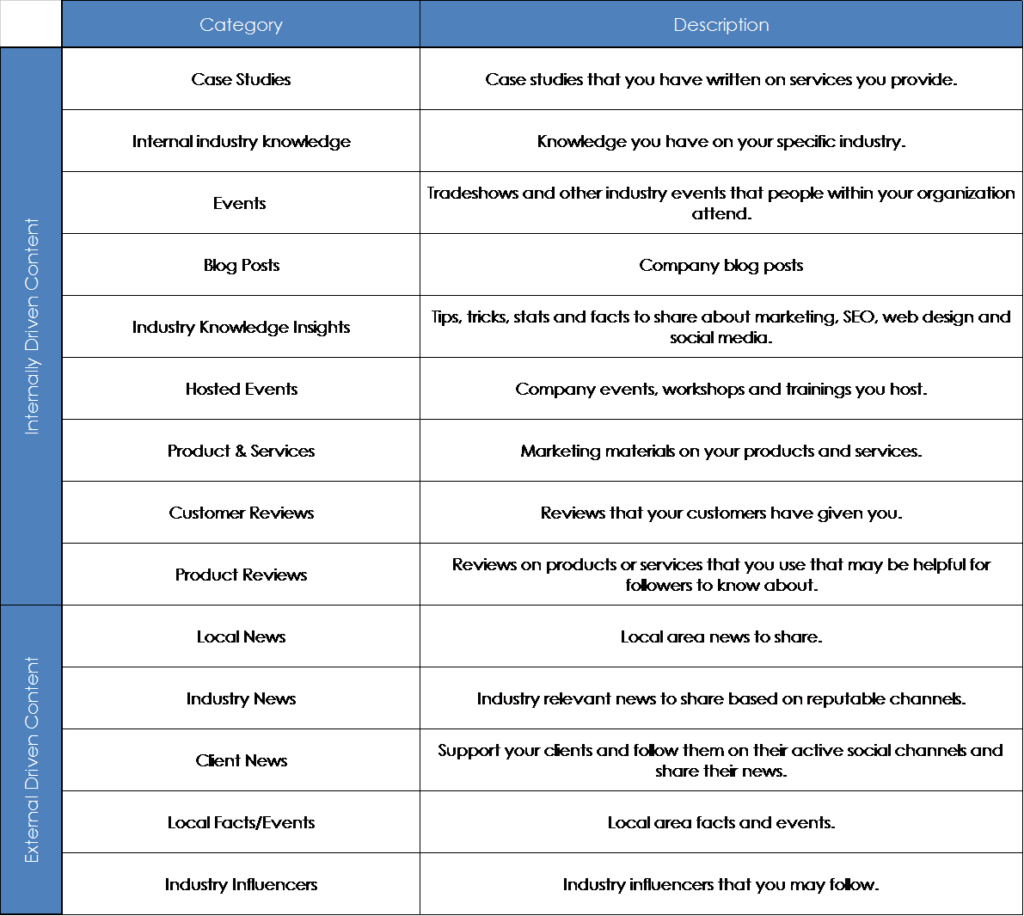How to Organize Your Business Content for Social Media Marketing
7 in 10 Americans are using social media to get information, follow brands, exchange thoughts, and connect with others.
Get a Free Marketing Analysis and Consultation
Nowspeed can review your Website, SEO, PPC, Email or Social Media Campaigns and identify ways to make an immediate impact!
With no end in sight for the popularity of social media, it has become increasingly important for businesses to incorporate social media into their marketing plans. In fact, a recent statistic shared by Statista showed that social media marketing remains a top priority for marketers, and 56% of marketers plan to increase their social media spend in 2017.

With so many businesses placing an increased emphasis on marketing their brands through social channels, how can you keep up? Developing a strategic plan for your business’s social media marketing can greatly increase the potential rewards.
In an earlier blog I discussed the importance of selecting the right social media platform for your business goals, which is key to getting started on the right foot with your social media marketing plan. However, selecting the platform is only the beginning. Developing the right content to share on those social channels is pivotal to gaining followers and having them engage with your brand online.
Identify the content you are going to share on your social channels.
Identifying the content you share on social media requires a bit of strategy and a lot of organization. A good rule of thumb is to adapt the 80/20 principle of business – which states that 80% of your revenue comes from 20% of your clients – to your social media content. 80% of your content should be non-promotional, educational, entertaining, and informative for your followers, and the other 20% can be self-promotional where you talk about services you offer or highlight accolades you have achieved.
The task of creating so much content can seem daunting, and the fear of not having enough content to post can be paralyzing. But before you hit the panic button, take a step back to look at content you may already have on hand. Begin by making a list of internal content: anything written and created by your organization, such as blog posts, case studies, marketing materials for your services, and industry knowledge. Then make another list of external content that doesn’t come from within your organization, like customer reviews, influencers that you follow, industry articles that you read, etc. Once you have created your lists, you can then divide each one into categories and create a content map, similar to the map below.

Create a content calendar to help organize your social posts.
With a content map on hand, you are ready to start putting together a content calendar. A content calendar organizes your content and helps you develop an editorial strategy for posting. There are many resources online that offer free content calendars to download that are very detailed, or you can create your own from an excel spreadsheet. If you create your own, the most important elements to have on the calendar are: category, post verbiage, links, social channel, and posting date and time.
Deciding which type of content calendar to use depends on how many social channels you will be posting to, as well as the frequency of those posts. For instance, if you are just going to be posting on one channel, it might make more sense to create your own calendar and post directly to that social channel. However, if you are managing more than one social channel, using a third party service like Hootsuite (my personal favorite) or Buffer can prove to be an invaluable time-saver. Some advantages of using a third-party service include having a built-in content calendar, being able to schedule multiple channels in one place, access to analytics, and having an convenient way of managing a team’s workflow.
Develop a process for when you are going to schedule your social posts.
Social media marketing can easily consume your entire day if you allow it to, but if you take the time to create a content map and calendar, you’ll have plenty of time for other tasks. Set aside a day or time of the week for you to work on scheduling your social media posts, and stick to it. It sounds simple, but it is something that people who I talk to about social media marketing often lose sight of when taking on social media for their business. Scheduling your social media marketing time will prevent last minute scrambling to get something posted, and also allow you the flexibility of making changes to your content calendar.
So let's
talk.
We're always excited to dig into the details of your company and what strategy can help you meet your goals. So let's talk and lay out a plan for success!